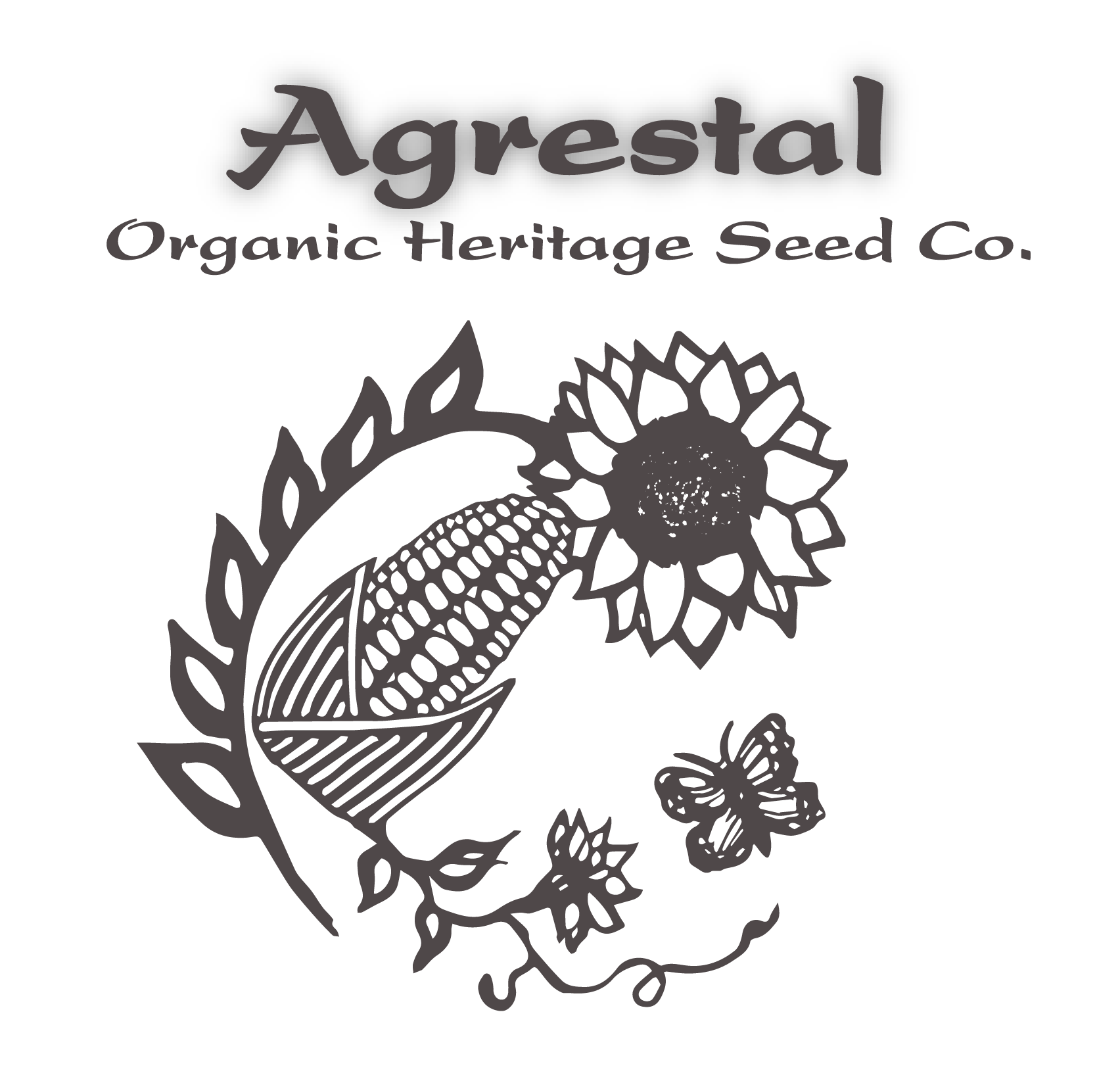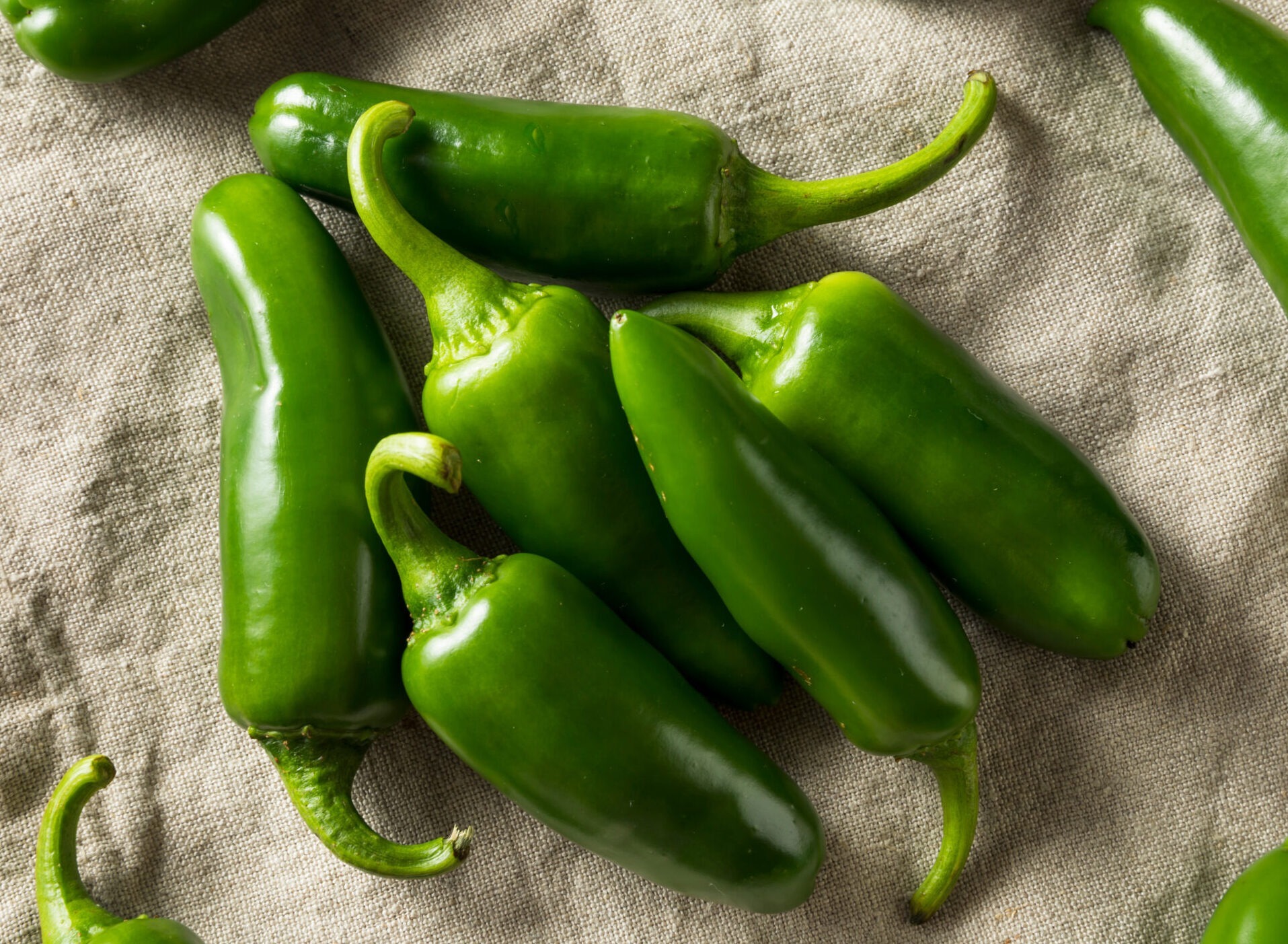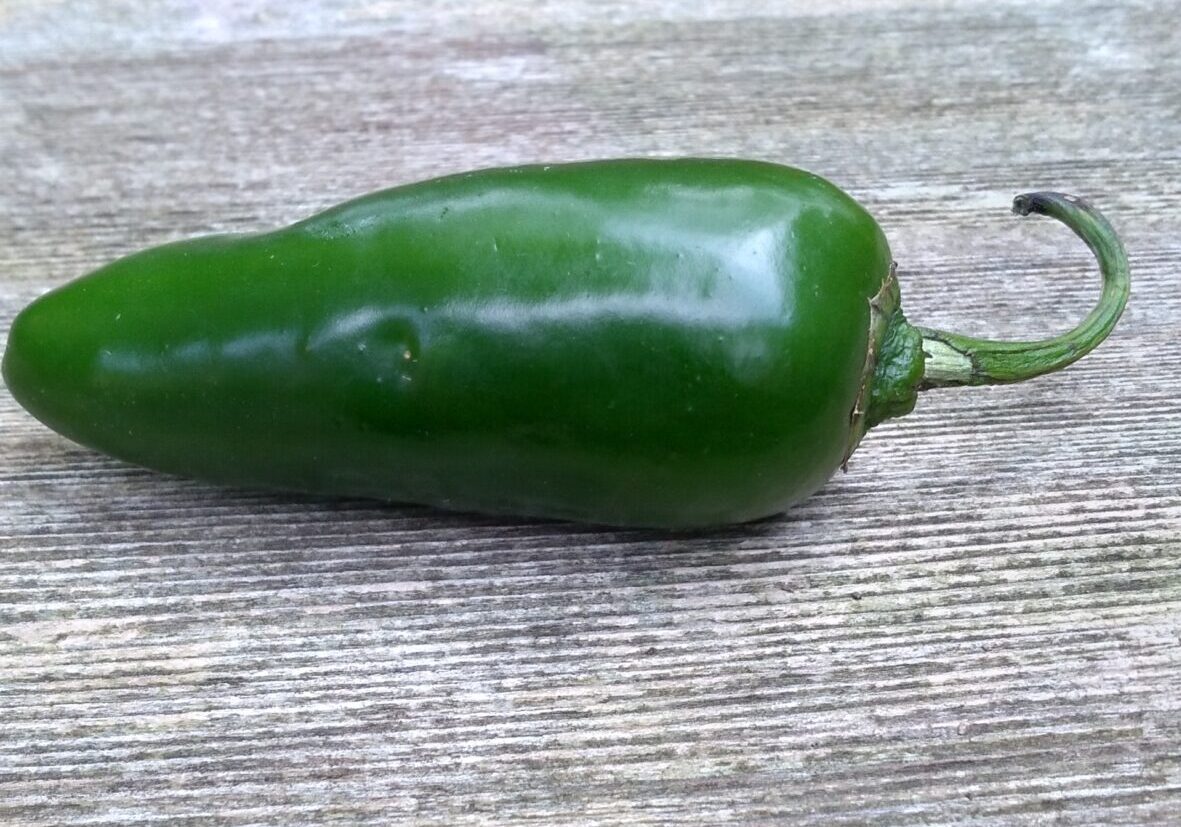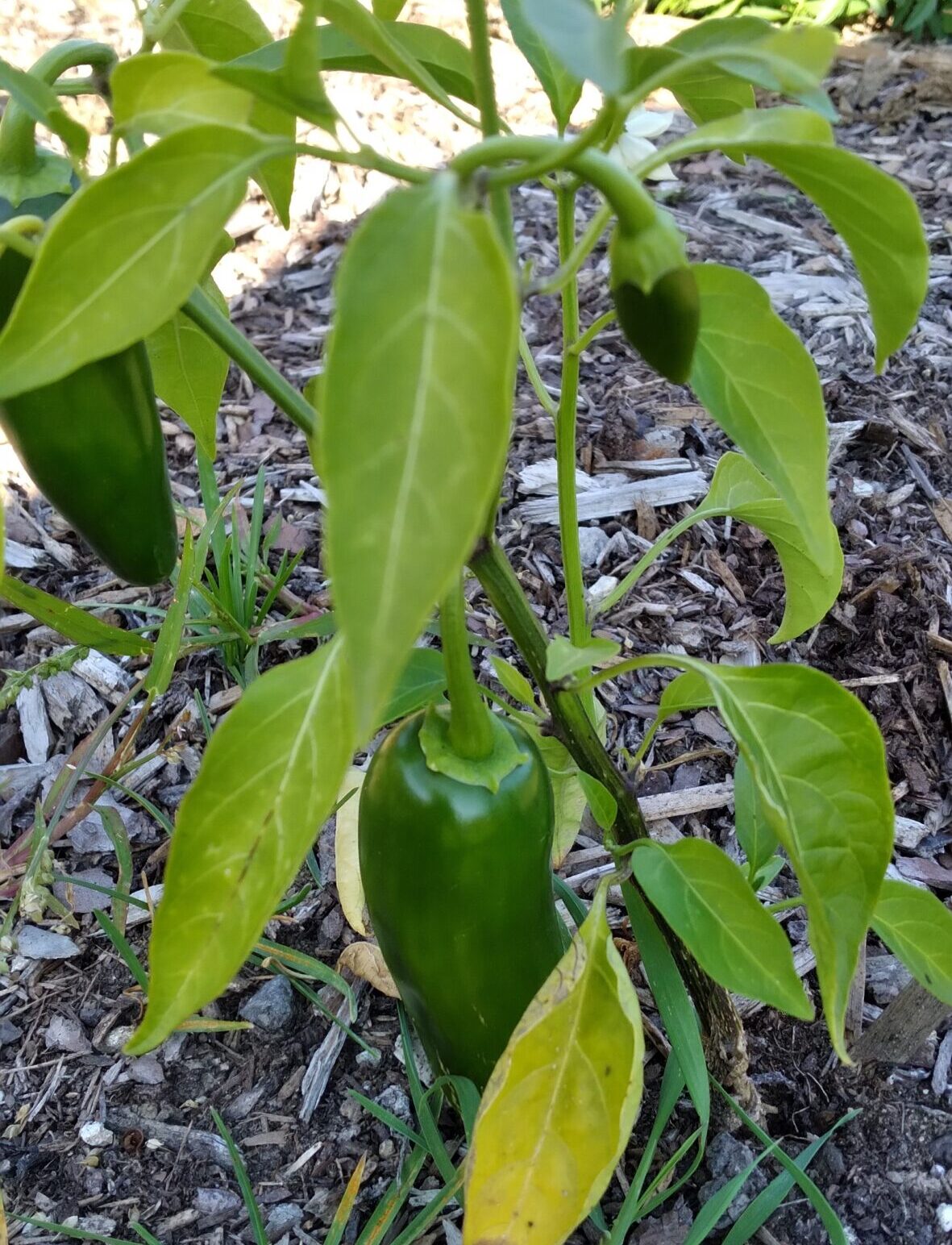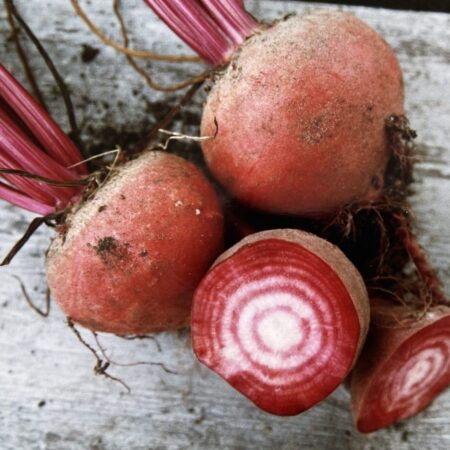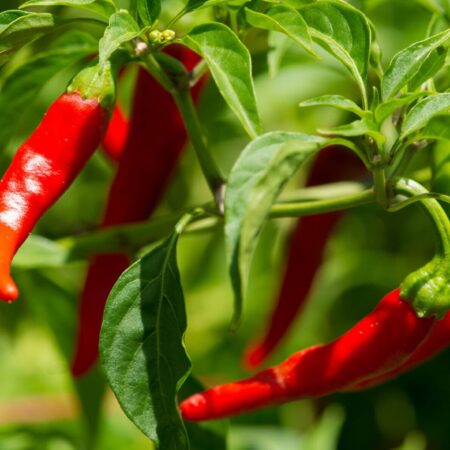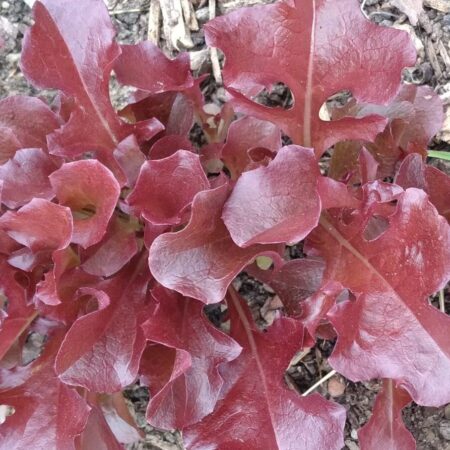Product Details
Jalapeño (3,500-10,000 SHU) Also known as Chipotle when dry smoked.
Heritage: Mexico, City of Xalapa “Jalapa” in the Region of Veracruz
Extremely popular in the Southwestern United States and Mexico, this variety of pepper has been growing and circulating throughout Central America for thousands of years.
Sturdy plants grow up to 3’ (90cm) high producing deep, glossy green fruits shaped like a sausage and tapering to a blunt end. Peppers average 3” (7.5cm) long and 2” (5cm) in diameter. They can be used at the green stage or when bright red and fully mature. There are so many uses for this historical Aztec variety! Pungent and relatively hot. Matures in 70-80 days. (130 seeds/g)
What is a Scoville Heat Unit (SHU)? It is the alkaloid called “capsaicin” contained in the glands of the chili pepper that makes it hot. Wilbur Scoville (1912) tested the hotness of a pepper by diluting samples of pureed chili peppers with enough sugar water so that the human taste-bud could just feel a slight burn on the tongue. This means that it takes between 3,500-10,000 teaspoons of sugar water to dilute 1 teaspoon of Jalapeño puree to the point of slight heat/burn acknowledgement. The more teaspoons of sugar water it takes to subdue the heat, the hotter the pepper is rated. (BTW all human tastes buds have different levels of taste power and heat tolerance based on age and regeneration, but that’s another story!) Also, bear in mind that peppers on the same plant can show fluctuation in heat intensity with the hottest fruit being at the bottom of the plant, closest to the earth. Geography and climate can also make a difference in taste.
Tips for Growing Perfect Peppers! Peppers require a long, warm/hot growing season. To get a head start in cooler climates, seed should be started indoors, 6-8 weeks before transplanting. Sow seeds 1/4” (0.5 cm) deep in sterile pots. Pepper seedlings are not all that hardy, or vigorous so watch for signs of too much water, or disease. As the weather warms, harden-off by setting plants outside for a few hours each day. Transplant outdoors 12-18” (30-45cm) apart only when variable spring weather has stabilized and the temperature has warmed. Provide adequate water and fertilizer and for best results pick the first peppers as soon as they reach edible size. This will help encourage growth and productivity. The most suitable companion plants for Peppers are; carrots, basil, and okra. Depending on the variety, peppers usually germinate within 10-21days (75-95ºF/24-35ºC). Note: Don’t be disappointed. Peppers are a touchy cultivator with lower germination rates than other vegetables.
